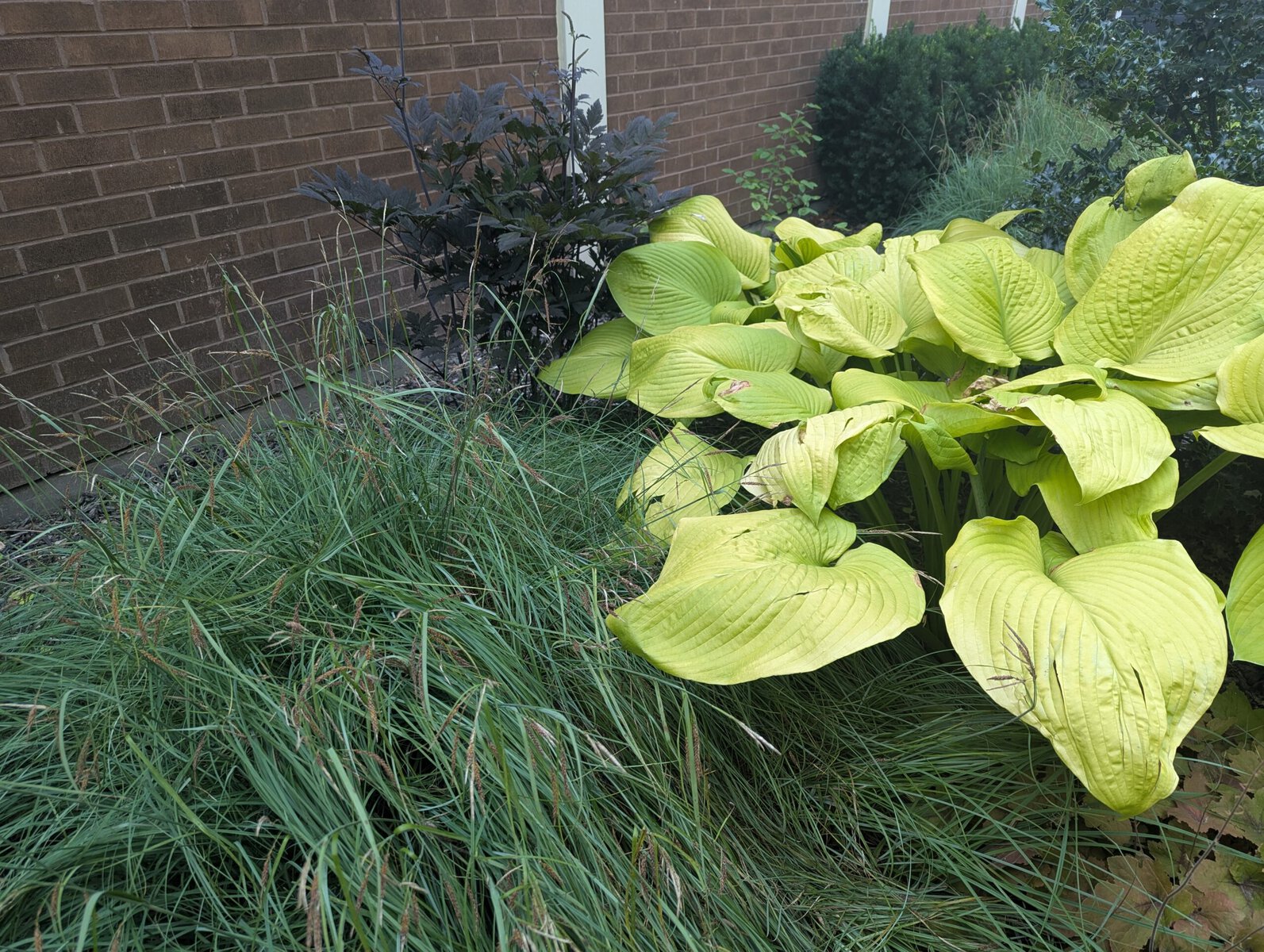There is something to be said, on a hot, humid summer’s day, about watching your tall ornamental grasses waving in a refreshing breeze. Grasses can add many different elements to a garden.
Now, I know what some of you are thinking: “Aren’t they messy?” or maybe, “Don’t they take a lot of work to maintain?”
Ornamental grasses are incredibly versatile and can be used in many ways to enhance your landscape’s texture, movement, colour and structure. Let’s look at each of these areas and at how ornamental grasses can easily fit into your garden.
Grasses can be used as focal points in the garden. Many of the tall or dramatically coloured grasses can be used to draw the eye and anchor garden beds. Their strong, vertical forms, with either wide, bold blades or fine, wispy blades, can provide architectural detail to draw the eyes to a certain area of the garden.
Ornamental grasses also add texture to your garden and provide contrast to other plants. Pairing fine-textured grasses with bold-leaved plants or flowering perennials will create striking visual contrasts.
Whenever you mix different textures together in the landscape, the garden comes alive. Suddenly, plants will stand out from each other and your eyes will start to pick up on all the details your space has to offer.
A mix of fine, wispy textures with broad or colourful foliage makes the garden feel dynamic and layered.
One of the grasses that I like to use in designs is miscanthus sinensis “morning light” (morning light silver grass). Its fine, wispy, silver-coloured blades are a perfect contrast of colour and texture with the dark green, bold leaves of a pink flowering hydrangea.
Low-growing ornamental grasses like carex, hakonechloa grass, blue fescue and fountain grasses make excellent plants for edging gardens or paths. They can be used to soften hardscape features like walkways, retaining walls or patios.
Just imagine walking along a shaded brick path with a low mounding, yellow and green variegated grass spilling over the edges.
When planting grasses, they can be planted as individuals or in small groupings (i.e., group of three or five plants). If your space allows, they can also be planted in drifts (larger groupings).
Repeating clusters around the landscape can provide visual unity and natural beauty. This works especially well in meadow-style plantings or xeriscapes.
Another way that ornamental grasses can be used is as a screen or hedge.
Tall, wide-bladed grasses can be used as a seasonal privacy screen. Many of the grasses in the miscanthus sinensis family will work well for this: zebra grass, porcupine grass and gracillimus silver grass.
There is also a grass named northern pompom grass that can grow up to 10 feet tall. The one drawback with using these tall grasses as a screen is that you cut them back down every spring to about six inches, so it won’t always be six feet. Taller grasses can also act as a wind block or a bit of a noise buffer.
Even though grasses are perennials, they do provide year-round interest.
Instead of cutting down the grasses in the fall, leave them intact until spring gives you another season to appreciate the texture.
Many grasses have striking fall colour and winter form (frosted plumes look beautiful in winter). A favourite grass of mine that is underused is “standing ovation” little bluestem grass (schizachyrium scoparium “standing ovation”).
It grows to be about four feet in height and only two feet in width. The colour of the blades is blue-green from spring to mid-summer — at that time, it starts to transition to a plum colour. It continues to intensify in colour going into the fall. Leaving the foliage there for the winter prolongs your enjoyment of the plant.
Other grasses also have great fall colours like huron sunrise miscanthus and any cultivars of panicum (switch grass).
I find that the grasses that stand up the best throughout winter are the ones with narrower blades. The snow does not catch on them as much and weigh them down. This would include varieties in the miscanthus family such as “gracillimus,” “graziella” and “morning light.”
So, the next time that you’re analyzing your garden, trying to figure out what is missing, you may want to consider an ornamental grass and see if that is what you need.
Joanne Young is a Niagara-on-the-Lake garden expert and coach. See her website at joanneyoung.ca











